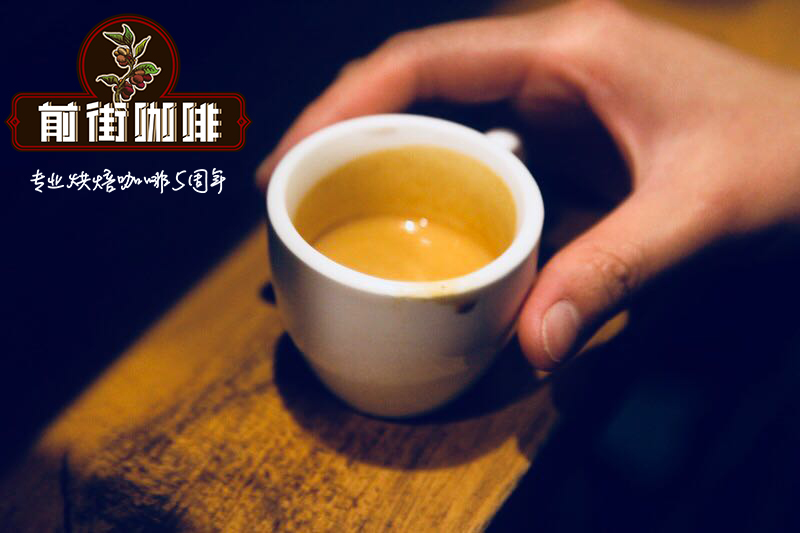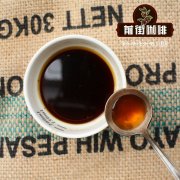Espresso machine how to weigh coffee beans | how much espresso is produced by 14g coffee powder?

Professional coffee knowledge exchange more coffee bean information please follow the coffee workshop (Wechat official account cafe_style)
Ten years ago, it was easy for the average consumer to believe the hype about going out for coffee non-espresso (espresso, as well as a variety of espresso drinks). There is nothing wrong with this in itself. Espresso has ridden the coffee tide for more than 50 years and has completely changed the shape of many cafes in the western world and even around the world. Yes, when I first figured out how to make good espresso, I was convinced that coffee that could be simply prepared was impossible to see.
Coffee powder weighing
Before loading the coffee powder, we should first put the coffee handle on the electronic scale to zero, and then put a dose of coffee powder ranging from 14 to 22 grams in a clean filter handle powder bowl. The specific amount of use depends on the capacity (different size) of the powder bowl and the amount and concentration of coffee you want to make.
If there is too much loading, the filter handle cannot be fixed to the cooking head. Of course, it can not be loaded less, otherwise the top space of coffee powder will be too large, which will not only lead to cake-shaped coffee paste, but also make the flow velocity unstable. At least at the beginning, remember to weigh the amount of coffee each time, so as to calculate the proportion of coffee when making a cup of coffee. Also, the coffee powder may need to be redistributed more or less at this time, but it first depends on how different types of grinders produce the powder.
Extraction ratio of espresso
With moderate extraction, the system is fully pressurized, and the brewed coffee flows out of the nozzle of the filter handle. You will see a unique crimson coffee concentrate fall into the cup, and for many people who see this magical moment for the first time, the feeling will never be fully replicated.
Depending on the coffee, the time to extract the best flavor is usually between 25 and 35 seconds. At the same time, we can make an espresso with a minimum brewing ratio of 1 ∶ 1 (the weight ratio of finished coffee to coffee powder) and a maximum of 3 ∶ 1. My personal favorite brewing ratio is 1.5 ∶ 1, which translates to an easy-to-operate figure of 18 grams of coffee to make 27 grams of espresso. Deep-roasted coffee requires a relatively low brewing ratio, so the alcohol thickness is not as thick as light-roasted coffee-but low brewing ratio is more likely to retain the original appearance of the coffee.
The brewing ratio can only measure the concentration of coffee drinks, and the weight of coffee itself will also slow down or speed up the extraction process. In order to achieve the extraction equilibrium as we understand, the extraction rate of espresso under any production conditions should reach 18% ~ 22% (that is, the ratio of coffee dissolved into the cup to the original weight of coffee powder). If espresso spills over too quickly, underextracted coffee will have a sour taste; conversely, coffee will taste bitter and astringent.
A good barista can grasp the relevant information from the flow rate and shape of the nozzle of the fuselage, and then judge the freshness of the coffee, the amount of extraction and the extraction efficiency. Some kind of yellowish liquid appears in the middle of the extraction process, which is called "yellowing"; in the view of many people, this stage is of little help to the flavor of the rest of the extraction process. The final stage can also extract a lot of beautiful and even important tastes, so we should not be too obsessed with the gelatinous red droplets unique to the early stages-even though they are intoxicating.
END
Important Notice :
前街咖啡 FrontStreet Coffee has moved to new addredd:
FrontStreet Coffee Address: 315,Donghua East Road,GuangZhou
Tel:020 38364473
- Prev

Espresso extract standard latte the ratio of espresso to milk
Professional coffee knowledge exchange more coffee bean information please pay attention to the coffee workshop (Wechat official account cafe_style) espresso (Italian espresso, also known as espresso) is essentially a filtration method using a precision metal filter, compared with gravity filtration, the biggest difference is pressure
- Next

Can you still drink coffee after the taste period? how long is the best taste period for freshly ground coffee?
Professional coffee knowledge exchange more coffee bean information Please follow the coffee workshop (Wechat official account cafe_style) James Freeman, founder of Apple Blue Bottle in the coffee industry, once said: coffee beans roasted from the roaster will reach their peak in 48 hours. Therefore, we only sell coffee produced within 48 hours. Coffee appreciation period and bean cultivation period
Related
- Beginners will see the "Coffee pull flower" guide!
- What is the difference between ice blog purified milk and ordinary milk coffee?
- Why is the Philippines the largest producer of crops in Liberia?
- For coffee extraction, should the fine powder be retained?
- How does extracted espresso fill pressed powder? How much strength does it take to press the powder?
- How to make jasmine cold extract coffee? Is the jasmine + latte good?
- Will this little toy really make the coffee taste better? How does Lily Drip affect coffee extraction?
- Will the action of slapping the filter cup also affect coffee extraction?
- What's the difference between powder-to-water ratio and powder-to-liquid ratio?
- What is the Ethiopian local species? What does it have to do with Heirloom native species?

